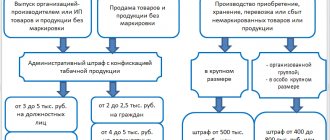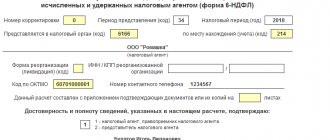What events fall within the definition of “Events after the reporting date”?
In order to determine which events fall within the definition of “events after the reporting date”, it is necessary to distinguish between two concepts:
- reporting signing date – the date of signing by authorized persons of the institution (centralized accounting department) of the entire set of accounting reports and explanations thereto
- date of acceptance of the statements - the day the higher organization that prepares the consolidated statements sends a notice of acceptance and desk audit of the entire set of accounting reports and explanations provided by the institution
An event after the reporting date is an event that occurred in the period between the reporting date and the date of signing and (or) acceptance of the accounting (financial) statements, taking into account the materiality of the facts of economic life that had or may have an impact on the financial condition, cash flow or results of the institution's activities.
An event after the reporting date is called material in the standard if the information disclosed about it in the financial statements is material.
However, criteria for assessing materiality have not been established. Therefore, the institution makes a decision on the degree of significance of the information independently, taking into account the requirements for accounting, budget and financial reporting.
A significant event after the reporting date must be reflected regardless of its positive or negative nature for the reporting entity.
Definitions
3
This standard uses the following terms with the meanings specified:
Events after the reporting period
– events, both favorable and unfavorable, that occur between the end of the reporting period and the date the financial statements are authorized for issue.
There are two types of such events:
- (a) events that confirm conditions that existed at the reporting date (adjusting events after the reporting period);
- (b) events that indicate conditions that arose after the reporting period (non-adjusting events after the reporting period).
4
The approval process for financial statements for issue will vary depending on management structure, regulatory requirements, financial reporting procedures and finalization.
5
In some cases, an organization is required to submit financial statements to shareholders for approval after they are issued.
In such cases, the financial statements are deemed authorized for issue on the date they are issued rather than on the date they are approved by shareholders. Example
On 28 February 20X2, management completes the draft financial statements for the year ended 31 December 20X1. On 18 March 20X2 the board of directors reviews the financial statements and approves them for issue.
On 19 March 20X2 the entity announces profit and other selected financial figures. On 1 April 20X2 the financial statements are presented to shareholders and other users. On 15 May 20X2 the shareholders approve the financial statements at the annual meeting and on 17 May 20X2 the approved financial statements are submitted to the regulator.
The financial statements are authorized for issue on 18 March 20X2 (the date on which the board of directors approved the financial statements for issue).
6
In some cases, the management of an organization is required to submit financial statements for approval to the supervisory board, which includes only non-executive directors. In such cases, the financial statements are considered authorized for issue when management approves them for release to the supervisory board.
Example 1
On 18 March 20X2 the management of an entity decides to submit financial statements to the supervisory board.
The supervisory board consists only of non-executive directors and may also include representatives of employees and other external stakeholders. On 26 March 20X2 the supervisory board approves the financial statements. On 1 April 20X2 the financial statements are presented to shareholders and other users. On 15 May 20X2 the shareholders approve the financial statements at the annual meeting and on 17 May 20X2 the approved financial statements are submitted to the regulator. The financial statements are authorized for issue on 18 March 20X2 (the date on which management decided to present the financial statements to the supervisory board).
7
Events after the reporting period include all events up to and including the date the financial statements are authorized for issue, even if they occur after the publication of the entity's earnings or other individual financial measures.
What events do not fall within the definition of “Events after the reporting date”?
The untimely receipt after the reporting date of primary accounting documents documenting the facts of economic life that occurred during the reporting period is not an event after the reporting date.
More on the topic: Official communications: we take into account mobile phones and SIM cards issued to employees for use
If such primary documents are received after the date of signing (acceptance) of the institution’s accounting (financial) statements by a superior user of the statements, these transactions are reflected in the next reporting period as errors of previous years. Such transactions are separated in separate accounting accounts, in a separate register, but are not reflected in the reporting for the current year. Only opening balances at the beginning of the year (in the inter-reporting period) are adjusted.
Recognition and evaluation
Adjusting events after the reporting period
8
An entity shall adjust the amounts recognized in the financial statements to reflect adjusting events after the reporting period.
9
The following are examples of adjusting events after the reporting period that an entity is required to account for either by adjusting the amounts recognized in the financial statements or by recognizing items not previously recognized in the financial statements:
- (a) a settlement of a legal dispute occurring after the end of the reporting period that confirms that the entity has a present obligation at the reporting date. The entity adjusts the provision previously recognized and related to this legal dispute in accordance with IAS 37 Provisions, Contingent Liabilities and Contingent Assets. It is not enough for an entity to merely disclose the contingent liability because the settlement provides additional evidence that is considered in accordance with paragraph 16 of IAS 37;
- (b) the receipt of information after the reporting period that indicates that an asset was impaired at the reporting date or that an adjustment to a previously recognized impairment loss for that asset needs to be adjusted. For example:
- (i) bankruptcy of a customer occurring after the reporting period generally confirms that a loss on trade receivables exists at the reporting date and that an adjustment is required to the carrying amount of trade receivables; And
- (ii) sales of inventories occurring after the reporting period can provide information about their net realizable value at the end of the reporting period;
Non-adjusting events after the reporting period
10
An entity shall not adjust the amounts recognized in the financial statements to reflect non-adjusting events after the reporting period.
11
An example of a non-adjusting event after the reporting period is a decrease in the fair value of an investment between the end of the reporting period and the date the financial statements are authorized for issue. A decline in fair value generally reflects circumstances that arise in a subsequent period and is not related to the position of the investment at the end of the reporting period. Therefore, the entity does not adjust the amount at which such investments are recognized in the financial statements. Similarly, an entity does not update the cost of investments disclosed in its financial statements at the end of the reporting period, although it may be required to make additional disclosures in accordance with paragraph 21.
Dividends
12
If an entity declares dividends to holders of equity instruments (in accordance with IAS 32 Financial Instruments: Presentation) after the reporting period, the entity shall not recognize those dividends as a liability at the end of the reporting period.
13
If dividends are declared after the reporting period but before the financial statements are authorized for issue, the dividends are not recognized as a liability at the end of the reporting period because no liability existed at that date. Such dividends are disclosed in the notes to the financial statements in accordance with IAS 1 Presentation of Financial Statements.
How to correctly classify events after the reporting date?
The standard divides all events after the reporting date into two groups:
- confirming the conditions of the organization’s economic activity that arose before the reporting date, but were not reflected in accounting because they became known after the end of the reporting period;
- indicating business conditions that arose after the reporting date
Table 1. Classification of events after the reporting date.
| Events indicating operating conditions that arose after the reporting date | Events confirming the operating conditions that existed at the reporting date |
|
|
More on the topic: Consultation line “Accounting in 1C: BSU”. Issue No. 50/20
Key Features
Accountants of budgetary structures need to determine these points:
- Criteria for classifying events as circumstances after the reporting moment.
- The procedure for recording such actions in accounting and reporting.
What are events after the reporting date ?
Decisions are made on the basis of PBU 7/98. Circumstances after the OA will be considered significant when, without recording them, it is impossible to carry out an objective assessment of the economic condition, the flow of funds, and the results of the company’s work. The materiality of an action is determined by the accountant himself based on the rules relating to reporting. Why do you need to determine the significance of an action? All events deemed significant must be recorded in reporting. This must be done in any case, even if the action is negative for the subject.
The consequence of the circumstance after the ML must be recorded in documents by changing information in the following areas:
- Assets.
- Debts.
- Expenses and income.
Categories of events after the reporting date
An alternative option is to open related information. The list of events is determined by each organization independently. Let's look at an example of such a list:
- An event associated with the conditions accompanying the work of an organization. For example, this may be declaring the debtor of the institution bankrupt, receiving information from the insurance institution on changes in the volume of insurance compensation, if negotiations are underway on the latter. It is also the discovery of a significant error in accounting after a period, which can lead to various types of distortions.
- Other events. For example, this could be actions to reorganize the legal structure, a transaction for the purchase or disposal of assets. These are also various emergencies: fires, emergencies, if they resulted in damage to the company’s property.
An organization has the right to establish its own list.
How to account for events after the reporting date ?
Examples of events after the reporting date (APD)
Post-ML events are divided into two categories:
- Supporting report data as of the final day of the reporting period (SOPs that occurred as of the reporting date).
- Forming specific conditions that arose after the last date of the period.
Let's look at examples of the first category of events:
- The debtor is declared bankrupt.
- Information was received about a stable decrease in the value of assets and deposits.
- The amount of insurance compensation was clarified.
- Production assets were sold, as a result of which the calculation of the cost of probable sale became unreasonable.
- It is established that the dividends are subsidiary.
- An accounting error has been discovered that distorts accounting information.
Let's look at examples of the second category:
- Decision to reorganize the institution.
- Completion of large transactions with significant financial significance.
- Purchasing legal education as a complex.
- A significant part of the central activities of the legal entity has been discontinued.
- There is a decision on the issue.
- Fixed assets or deposits were acquired.
- Fixed assets or deposits have been disposed of.
- Exchange rates have changed, which could not have been predicted earlier.
- A court decision that gives rise to an obligation.
It is assumed that all of these significant events occurred unexpectedly. Their occurrence could not be predicted in advance.
How to reflect events after the reporting date in accounting (budget) accounting?
As part of the formation of its accounting policies, the institution must independently establish the procedure for recognizing events after the reporting date in its accounting.
In this case, the event confirming the conditions of activity is reflected in the accounting records on the last day of the reporting period. A change in the registers is entered by an additional accounting entry or an accounting entry prepared using the “Red Reversal” method and an additional accounting entry.
And events indicating operating conditions are reflected in accounting in the period following the reporting period. That is, such information is not reflected in the accounting records during the reporting period.
How information about events after the reporting date is disclosed in financial statements
An event confirming the conditions of activity is reflected in the accounting (financial) statements generated on the basis of accounting data, taking into account the reflection of the specified event after the reporting date. The explanatory note to the accounting (financial) statements contains information about the conditions of economic activity as of the reporting date. Events after the reporting date are also taken into account, based on the results of which the accounting (financial) reporting indicators are formed.
Information about events indicating operating conditions, in turn, is reflected in the explanatory note and (or) explanations presented as part of a complete set of accounting (financial) statements for the reporting period. A brief description (characteristics) of events after the reporting date and an assessment of the consequences of their occurrence in monetary terms are subject to disclosure. If a monetary estimate is not possible, these facts and reasons must also be disclosed in such explanatory note and/or explanations.
Target
1
The purpose of this standard is to define:
- (a) when should an entity adjust the financial statements for events after the reporting period;
- (b) the disclosures that an entity must make about the date the financial statements are authorized for issue and about events after the reporting period.
In addition, this Standard requires an entity not to prepare its financial statements on a going concern basis if events after the reporting period indicate that the going concern basis of accounting is not appropriate.






